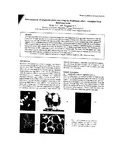Determination of magnetite grain-size using the Hopkinson effect - examples from Botswana rocks

View/
Date
2001Author
King, J.G.
Ranganai, R.T.
Publisher
Botswana Geoscientists AssociationType
Published ArticleMetadata
Show full item recordAbstract
The Hopkinson effect is the increase of magnetic susceptibility with temperature from near room temperature to near the Curie point. Although this effect has been known for more than a century, it has not been effectively utilised as an analysing tool in palaeo, rock and environmental magnetic studies. This is partly due to the poor understanding of the influence of magnetite (Fe,O.)grain parameters on the Hopkinson effect. In an attempt to study the effects of grain size on the Hopkinson effect, magnetite samples with well-defined grain sizes have been used. it was found that in general, magnetic susceptibility enhancement factor (SEF) obtained by heating the sample in a non-oxidising environment, increase with decreasing grain size. The relation of SEF to grain size is linear when plotted on a log-log scale. This relation has been used to infer grain sizes (hence magnetic domains) for some selected Botswana rocks. The inferred magnetic domains are consistent with independent predictions from hysteresis measurements for the same samples.
